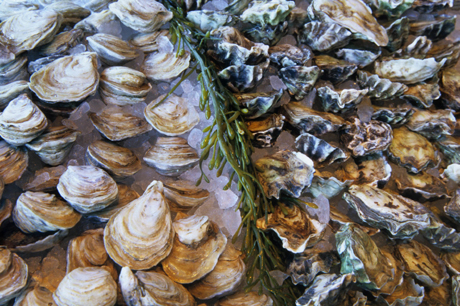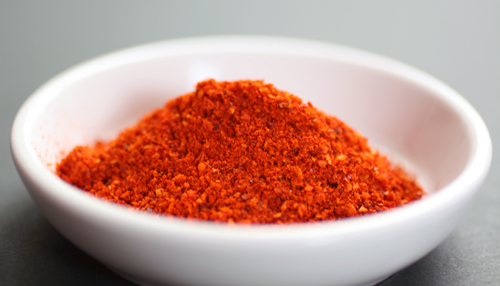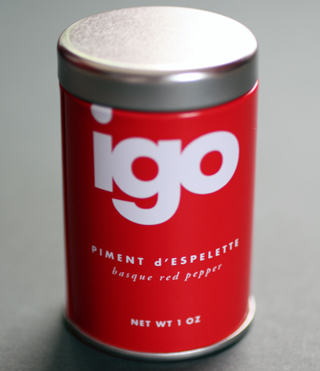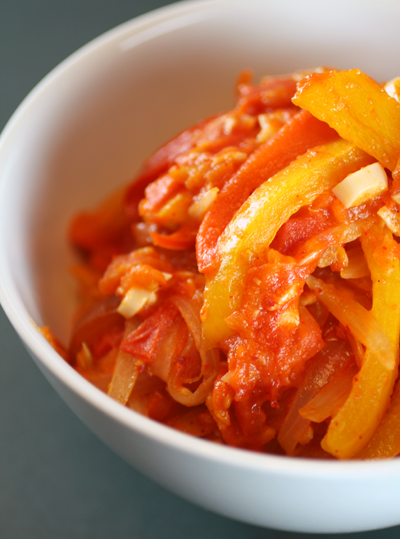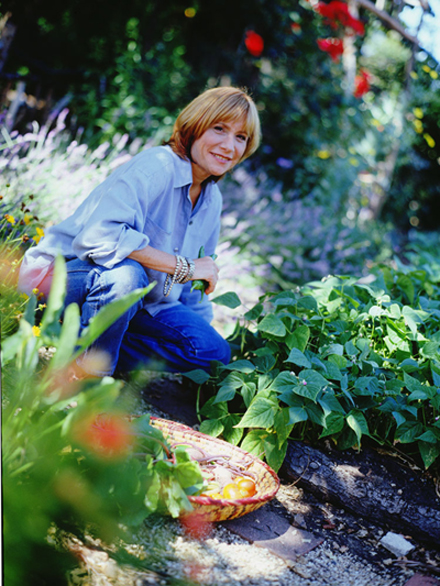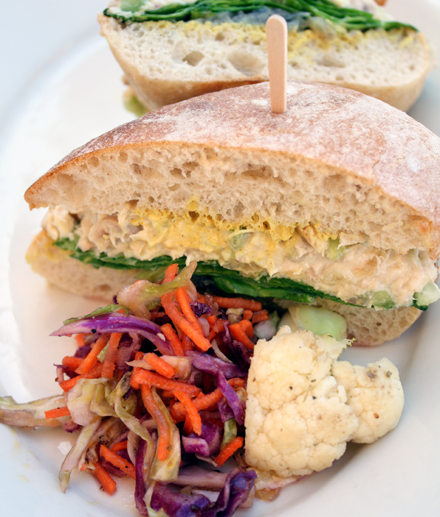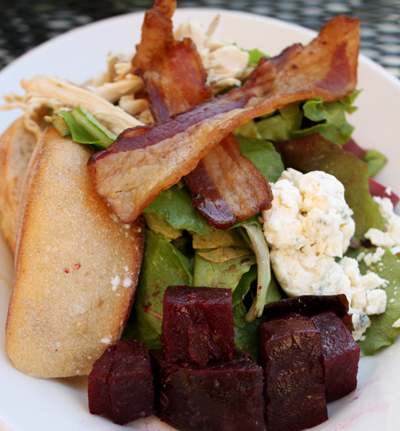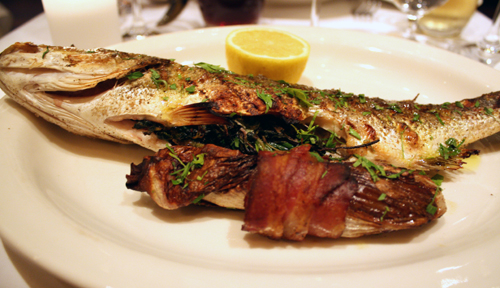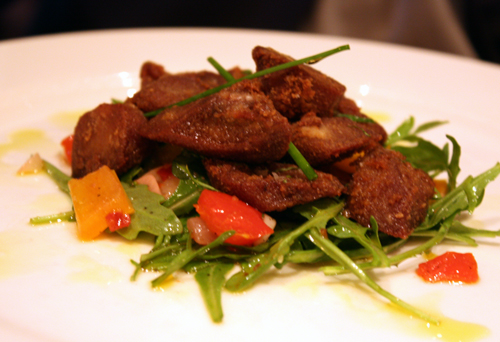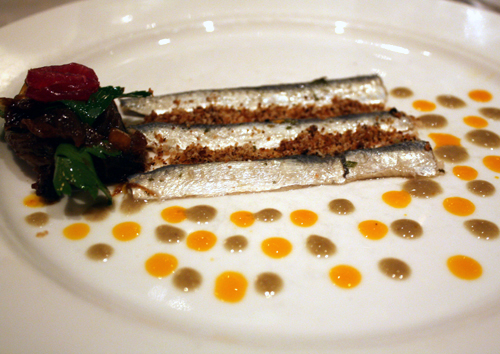Scenes From Star Chefs & Vintners Gala

Take 80 of the Bay Area’s celebrated chefs and 76 top vintners. Put them together in one venue, and what you have is the 22nd annual Star Chefs & Vintners Gala last Sunday at San Francisco’s Fort Mason.
The lavish event is the main annual fund-raiser for Meals on Wheels, which provides more than 16,000 meals each week to homebound seniors in San Francisco. Yours truly was invited as a guest to enjoy the festivities that featured almost every well-known chef imaginable — from Chris Consentino of Incanto in San Francisco to Maggie Pond of Cesar in Berkeley to Daniel Patterson of Coi in San Francisco to Charles Phan of the Slanted Door in San Francisco to Richard Reddington of Redd in Yountville. For the sixth year in a row, Chef Nancy Oakes of Boulevard in San Francisco was the gala head chef.

The $400-per-person gala started off with a walk-around reception, where 40 chefs doled out specialty hors d’oeuvres throughout the cavernous hall.

Hiro Sone and Lissa Doumani of Ame in San Francisco set up their popular Nagashi somen station. Made of bamboo and looking a little like an amusement park game, you “catch” your somen with a small sieve as a tangle comes shooting down a bamboo trough flowing with water.

You didn’t have to worry about missing, either. Doumani stood at the ready with her own handled basket to catch it if you didn’t. Once you nabbed your somen, you transferred it to a small cup filled with dashi, chopped ahi, salmon eggs, and konbu slivers to enjoy.


